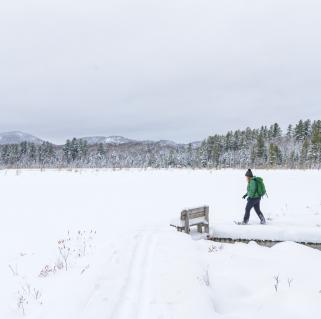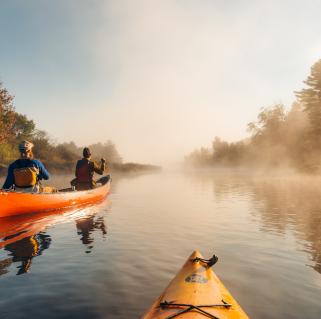Alan Belford
November 13, 2013
I see muskrats almost every day that I’m out walking with Wren or looking for birds. I find them in most streams, lakes, and marshes in the region from Bloomingdale Bog to the waterways which empty into Lake Champlain. This is particularly true during the fall as our days grow shorter and after we change our clocks to standard time and darkness comes an hour earlier. Muskrats (technically named Common Muskrats) are generally crepuscular (active at dawn or dusk) or nocturnal, and my daily walks at this point in the year often coincide with sunset and the onset of dark, affording me more opportunity to see them.
And although they are a common species, I enjoy seeing them all the same. Wren often smells around where muskrats have been feeding or perhaps leaving their musky scent, and the other evening she perked up excitingly running along the trail watching one swimming across the water. We also sometimes hear muskrats gnawing on aquatic vegetation in the dark during our walks.
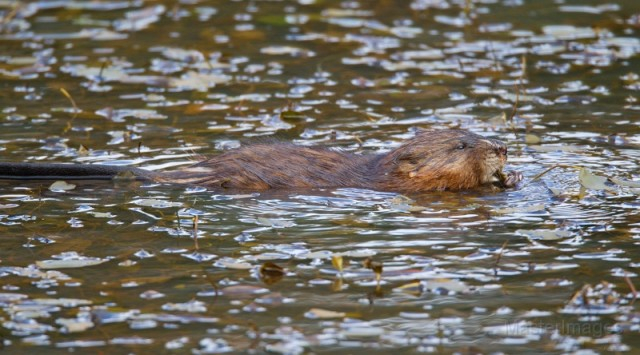
And they are fascinating animals. Their thick fur is soft and warm allowing them to be active year round – even when ice covers Adirondack lakes and wetlands. Their eyes and ears are quite small and their ears are not easily noticed as they swim along the water surface on a pond or lake. Their scaly tail is long and snaky, measuring about 9 inches – not quite half their total length.
The huts of muskrats are about two meters across in size, and are common sights in wetlands across the region - even in the dead of winter. Their huts have one or two chambers which the muskrats access through underwater entrances. They construct the huts out of aquatic vegetation and mud, and in places where vegetation is scarce, they will burrow into the banks of streams or lakes. They also make feeding structures and platforms that are often covered in this portion of their range.
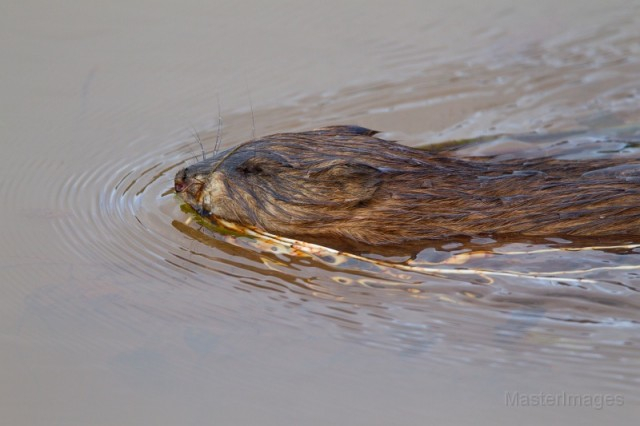
When Wren and I find muskrats, they are often towing vegetation towards their huts or to their feeding stations. This is particularly important for them to do in the fall as they prepare for the long, frozen winter. The roots, leaves, and stems of a variety of aquatic plants make up the bulk of their diet, but they are known to scavenge dead animals as well as eat fish, amphibians, and crayfish and other invertebrates if they can catch them. Muskrats can even close their lips behind their sharp front rodent incisors so that they can chew through aquatic vegetation underwater without taking water into their mouths.
Since muskrats are busy gleaning food during the fall, Wren and I will often see three or four muskrats simultaneously as we walk around evening at this time of year. Once the ice is on the lakes, muskrats spend much of their time under the surface, but they will come up through holes in the ice where they can often be found cleaning and combing their thick fur, perhaps sunning themselves as well. Then they look quite cute sitting on the ice and rubbing their faces and fur. They are always fun to see.

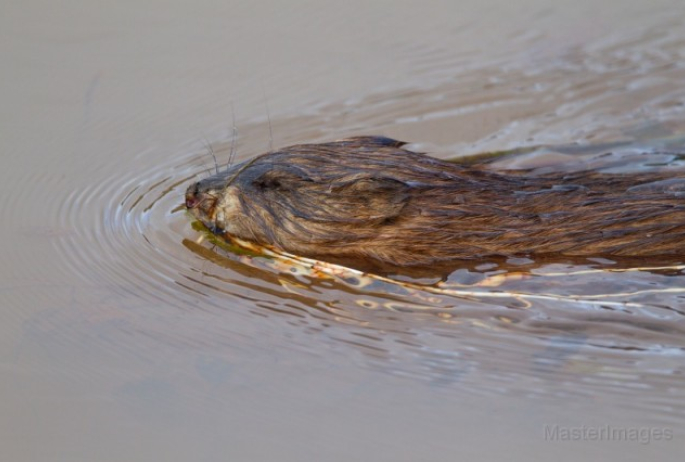
Packages and Promotions
Valid Dec. 1
- Dec. 1
Valid Dec. 1
- Dec. 1
Linger Longer in Saranac Lake
Best Western Saranac Lake
Linger Longer in Saranac Lake at our supremely located property, Best Western Saranac Lake. Stay 2 nights or more and get 15% off!
Valid Jan. 16
- Mar. 31
Valid Jan. 16
- Mar. 31
Hotel Saranac Sled & Spoke Package
Hotel Saranac
Snowmobile Package Hotel Saranac and Sara-Placid Sled & Spoke have partnered so you and a guest can explore dozens of miles of ADK snowmobile...
Valid Jan. 16
- Mar. 31
Valid Jan. 16
- Mar. 31
Hotel Saranac Ski & Stay Package
Hotel Saranac
Stay & Ski Package Stay at Hotel Saranac and Ski Titus Mountain Day or Night Package Your room reservation includes one adult lift ticket....
Valid Jun. 20
- Sep. 7
Valid Mar. 12
- Jun. 30
Guided Nature Immersions - 10% off for Pre-Season Registration
Adirondack Riverwalking & Forest Bathing
Picture it now...you are wading the Ausable River on a warm summer day, feel the cool water against you, hear the sounds of the birds and the...
Valid Jan. 21
- Mar. 31
Valid Jan. 21
- Mar. 31
Titus Mountain Ski Package
Voco Saranac Lake
Enjoy your stay at the award winning voco Saranac Lake which includes two adult lift tickets at Titus Mountain Family Ski Center. Additional...
Valid Jan. 21
- Jan. 21
Valid Jan. 21
- Jan. 21
Stay and Dine
Voco Saranac Lake
Receive a 50 dollar credit per stay to use in our Boathouse Saranac Lake Pub. Enjoy an exceptional dining experience with unparalleled views great...


